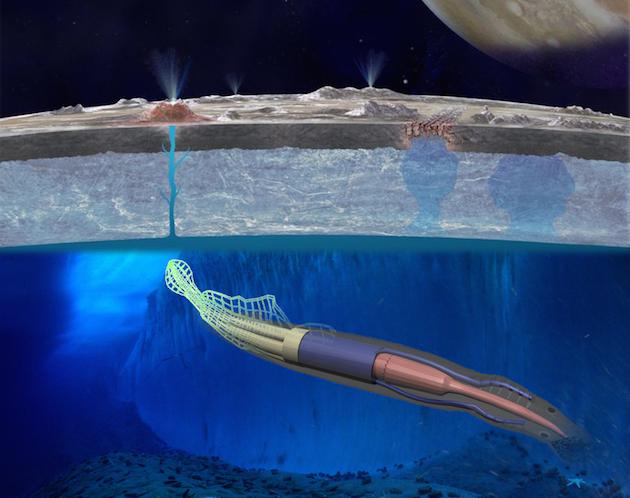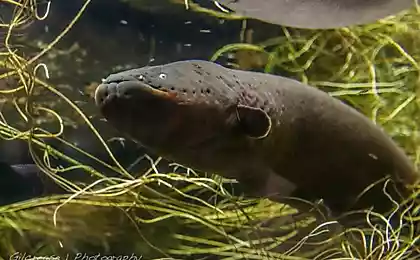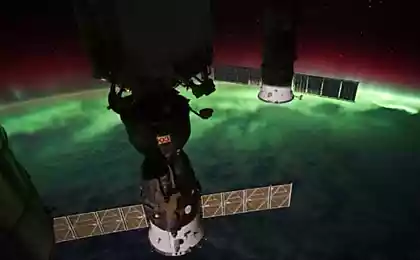719
To study in Europe NASA proposes to use the robot eel

Europe - a very interesting place for various kinds of research. However, all this involves a number of difficulties, including distance from the Earth Europe - not the main problem. The fact is that the most interesting area to explore - ice and hit the ice in Europe, the thickness of which is many kilometers is not the easiest task. In addition, in contact with the ice (assuming there - liquid water), the device must be prepared for the long swim with the simultaneous study of the most interesting places.
For machine need energy, which is to maintain the operation of such a system should be quite a lot. The NASA suggest using гибкого Robot , like the eel, which would receive energy from local magnetic fields. This robot will be equipped with a special antenna and a "tentacles" on the back, which will be simultaneously collect energy dynamic magnetic fields and serve as a means of transportation.
It should be noted that this project was selected from NASA 15 most interesting projects submitted by participants in the program NIAC. In the first phase of the program were awarded the winners of the money, with a total fund of $ 100,000. If the concepts presented by the authors (eg, such as a robot eel) will show its viability within 9 months, the authors of these projects will be awarded again. At this time, the total amount of the prize pool - $ 500,000.
Sami projects relate not only to study in Europe, but the whole space. For example, one of the projects that received the name CRICKET, proposes to evaluate the reserves of water, hydrogen, nitrogen on the cold planets and satellites. There is not a single device, an entire system is proposed to use robotic tractors, special balls and jump systems.
Another project - a system of two drones, which are connected by a cable. The top unit provides a lifting rod, and the second unit does not allow the system to reduce the height. The authors believe that such a bunch of drones can operate without landing, many years.
Full list of projects proposed by participants in the program NIAC, can be found at этой link .
Source: geektimes.ru/post/250230/























